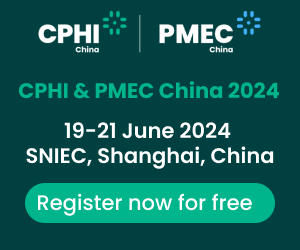Articles
Medical Writing Services in Asia: Recent Developments and Trends
Authored by:
Dr Julia Cooper, Vice President, Head of Global Medical Writing Services, PAREXEL
In an increasingly complex and regulated pharmaceutical industry, there is growing recognition that a special skill is required to produce well-written documents that comply with standards and regulations. Within clinical development, there is high demand for experienced medical writers who have the expertise to lead the team in preparing quality, compliant documents on time. In the clinical research organization (CRO) sector, overall growth in outsourcing has also driven the demand for medical writers, as biopharmaceutical companies increasingly rely on outsourced solutions to achieve greater efficiencies.
Medical writing growth in Asia
Medical writing in Asia is an emerging profession and the demand for professional writing skills is on the rise. As such, medical writing hubs in locations such as China, Japan and India have been established to meet the growing need for experienced writers in these locations.
China:
The Chinese pharmaceutical market is projected to become the 2nd largest globally by 2016, and there is increasing demand for studies to launch new products in China. There are no accurate data on the size of the pool of medical writers in China, but recent informal estimates vary between 50 and 100 dedicated medical writers across CROs and biopharmaceutical companies. For comparison with established markets, there are over 5,000 members registered with the American Medical Writers Association (AMWA), and over 1,000 with the European Medical Writers Association (EMWA), which are the main professional organizations for medical writers. In China, the medical writer typically prepares the clinical study report, and the clinical sections of the registration dossier. Data from Chinese patients are required to obtain marketing approval, and these may be obtained from a standalone China study, or by including Chinese sites within a multi-country trial. The China Food and Drug Administration (CFDA) has issued a clinical study report guideline, and the format mostly follows International Conference on Harmonisation of Technical Requirements for Registration of Pharmaceuticals for Human Use (ICH)E3 in scope and complexity. In addition, a recent CFDA draft guideline clarifies that comparisons between Asian versus non-Asian, and Chinese versus non-Chinese data must be included in the study report for a multi-regional clinical trial. This is where the medical writer brings their expertise to prepare a clear, well written report that is best suited to the data. For the registration dossier, the clinical study report data may be supplemented by additional summaries to present the benefit/risk assessment in Chinese subjects, and this requires medical writing skill combined with local regulatory knowledge to understand how best to present and discuss the data. When working with a multinational company, the study report and submission documents are often prepared in English to facilitate review by the global team, and then later translated into simplified Chinese for submission to CFDA. The English version of the China study report may also be re-used in subsequent global submissions. Thus medical writers in China often need excellent written English skills, in addition to Chinese.
Japan:
In Japan, medical writing has been established as a formalized profession for about 15 years. More recently, changes implemented to shorten the lag in availability of medicines compared to other developed countries have led to increased demand for Japanese clinical studies, and therefore also for medical writers. In regulatory medical writing, the main areas of involvement are preparation of clinical study reports and the clinical sections of the registration dossier, although there is an emerging need for medical writers to contribute to protocols and some other documents. Japan has implemented ICH, thus the study report follows the international ICH E3 format. However, additional detail is required for some sections of the clinical Common Technical Document (CTD) modules, and any differences in efficacy and safety in Japanese subjects compared to the global population need to be appropriately presented and discussed. The CTDis usually prepared directly in Japanese for submission to the Pharmaceuticals and Medical Devices Agency (PMDA);however, the medical writer may also need to communicate well in English, especially when working with non-Japanese sponsors who often need to have the CTD reviewed and approved by their headquarters.
India:
In India, dedicated regulatory medical writing groups also began to emerge about 10 to15 years ago.The profession has undergone significant expansion in India due to the ongoing global demand for new talent able to deliver good quality medical writing in English, and currently there are probably around 500 writers involved in some form of regulatory medical writing.Each year, India produces a large number of graduates in the medical and life sciences, with English as their primary language. A few years ago, new graduates would join the profession often as a stepping stone into other roles. More recently, medical writing is being viewed as a fulfilling profession with long term career prospects, and this serves to increase the experience base within Indian regulatory writing. While global companies outsource medical writing to India as a location compatible with ever diminishing clinical research budgets, the quality of the writing is equally important. In parallel to demand from global companies, the local need for good medical writing services has also increased in recent years. Many Indian biopharmaceutical companies have their own medical writing groups but are increasingly outsourcing their work as well. As the Indian pharmaceutical industry increases clinical development activities targeting both Indian and other markets such as Europe and US, there is a growing need for experienced medical writers able to prepare the complex documents required for regulatory submission dossiers. The medical writing skill base in India is also strong in the pharmacovigilance sector, andseveral teams have in-depth experience in writing different types of aggregate safety reports, including Periodic Safety Update Reports (PSURs), Periodic Adverse Drug Experience Reports (PADERs), and Periodic Benefit-Risk Evaluation Reports (PBRERs).
Future developments
The need for quality medical writing services is growing, both globally and in Asia. The medical writer is in demand, not just for the actual writing of documentation required for clinical drug development, but increasingly to provide leadership and guidance to teams responsible for documentation across entire compounds. In the CRO world,as strategic partnerships and Functional Service Provider (FSP) programs mature, medical writers are working more closely with sponsors over a longer term relationship. New developments in clinical trial disclosure and transparency are a logical extension of the medical writer role, calling for a clear and concise writing style and consistent presentation of data that will be available in the public domain.
As the value of the medical writer achieves recognition in Asia, the availability of experienced writers able to take on complex writing assignments is key. Seasoned writers able to contribute local regulatory and writing knowledge are essential to assure the success of local submissions as well as the overall global submission strategy. Expanding capabilities in Asia for complex document support and leadership of writing teams will be a strong focus for the CRO industry going forward.




